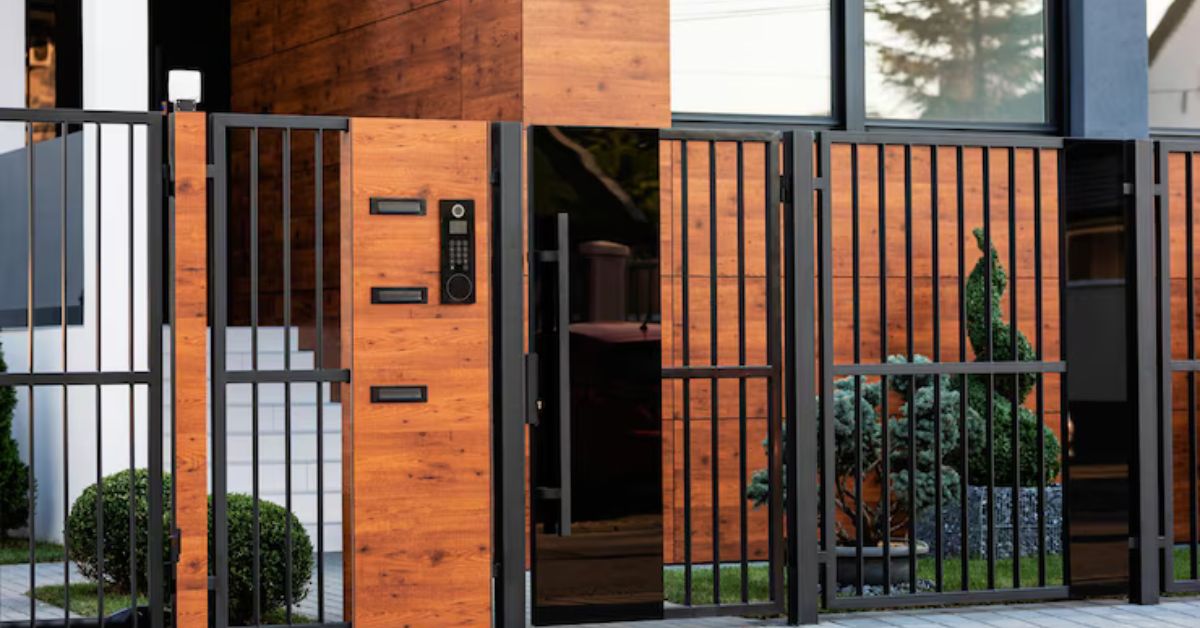Blogs
Importance of Residential Fencing

Fencing plays a crucial role in shaping the functionality, security, and aesthetics of a residential property. While often viewed as a boundary marker, residential fencing serves a variety of purposes that go beyond merely defining property lines. This article delves into the importance of residential fencing, exploring its many functions and the value it brings to homeowners and neighborhoods alike.
Defining Property Boundaries
One of the most fundamental reasons for installing a fence around a residential property is to clearly define the boundaries. Well-placed fences help avoid disputes between neighbors regarding where one property ends and another begins.
Legal Clarity
In many areas, fencing acts as a legal demarcation that supports property deeds and surveys. It can prevent encroachments and serves as a visual reference for ownership.
Reducing Conflict
Fences reduce ambiguity, which can be especially important in densely populated urban and suburban neighborhoods. They help maintain neighborly relationships by minimizing disagreements about land use and responsibility.
Enhancing Security
Security is one of the primary motivations behind residential fencing. A well-constructed fence can act as a deterrent to unauthorized access and criminal activity.
Deter Burglars and Intruders
Homes with fencing are less likely to be targeted by burglars because the physical barrier increases the effort needed for entry and raises the risk of detection.
Safety for Children and Pets
Fencing provides a safe enclosure for children and pets, allowing them to play outdoors without the risk of wandering off or encountering traffic and strangers. This gives homeowners peace of mind and increases the usable outdoor space for family activities.
Privacy and Seclusion
In an increasingly crowded world, privacy is a precious commodity. Fencing can create a personal sanctuary in a residential yard, shielding residents from prying eyes and unwanted attention.
Visual Barrier
Privacy fences, especially those made from wood or vinyl, can block the view from roads and neighboring homes, allowing residents to enjoy their property without feeling exposed.
Noise Reduction
While not as effective as soundproofing, certain types of fencing can help muffle outside noise, such as traffic or loud neighbors. This is especially beneficial in busy or high-density areas.
Aesthetic Appeal
Beyond function, fencing contributes to the aesthetic character of a home. The style, material, and color of a fence can complement a house’s architecture and landscape design.
Visual Unity
Fencing can unify the look of a property, framing the yard and enhancing curb appeal. Coordinated with landscaping elements like plants and pathways, a fence can elevate the overall appearance.
Customization Options
Homeowners can choose from a range of materials and designs, from classic picket fences to modern metal panels. This allows for creative expression and alignment with personal tastes and neighborhood themes.
Increasing Property Value
While often overlooked, fencing can have a tangible impact on a home’s market value. Potential buyers are more likely to favor properties with existing fences, particularly in family-oriented neighborhoods.
Attractive to Buyers
A fenced property is seen as more complete and secure. Buyers with children or pets may view fencing as a necessary feature, giving the property a competitive edge in the housing market.
ROI Considerations
Although the return on investment for fencing varies depending on material and location, it is generally viewed as a value-adding improvement, particularly when done tastefully and maintained properly.
Supporting Zoning and Homeowner Association (HOA) Rules
Fencing can play an important role in compliance with local zoning laws or HOA guidelines. These regulations often require fencing for safety, uniformity, or privacy reasons.
Zoning Requirements
Municipal codes may dictate fence height, material, and setback distance from the property line. Adhering to these rules can prevent fines and legal complications.
HOA Standards
Homeowner associations may enforce specific fencing guidelines to preserve neighborhood aesthetics or ensure uniformity. Proper fencing supports community cohesion and helps maintain property values.
Environmental Protection and Containment
Fences can also function as barriers against natural elements or wildlife, serving both protective and environmental purposes.
Wind and Dust Control
In open areas, fences help reduce the impact of wind and airborne debris. Certain designs can limit soil erosion or act as windbreaks to protect gardens and outdoor structures.
Wildlife Management
Fencing can prevent wild animals from entering residential yards, which is especially important in rural or wooded areas. It can also keep household pets from disturbing local ecosystems.
Legal and Liability Considerations
Residential fencing may also reduce liability and fulfill legal obligations under certain conditions.
Pool and Hazard Enclosures
Many jurisdictions require fencing around swimming pools to prevent accidental drownings. Fences ensure that such hazards are properly enclosed and reduce the homeowner’s liability risk.
Limiting Trespass and Injury
Fencing helps keep out unwanted visitors and discourages people from entering areas that could be unsafe. By preventing unauthorized access, it protects both the homeowner and the public from potential harm.
Supporting Landscaping and Garden Design
Fences can play an integral role in landscaping by segmenting garden areas, supporting plants, or creating visual depth in a yard.
Garden Segmentation
Fences help define garden beds, vegetable plots, and play areas. This organization enhances the functionality and appearance of outdoor spaces.
Plant Support
Trellis-style fences can support climbing plants like ivy, roses, or beans. They not only enhance the beauty of the fence itself but also contribute to vertical gardening.
Symbolic and Cultural Significance
Fencing has a long-standing cultural and symbolic meaning, often tied to notions of ownership, independence, and control over one’s space.
A Sense of Ownership
Installing a fence is an act of staking claim to a portion of land. It represents responsibility and pride in maintaining and protecting a home.
Historical Importance
Historically, fences have marked the evolution of property laws and social development. They have been used for centuries to signify land boundaries and social order, reflecting their deep cultural resonance.
Maintenance and Long-Term Considerations
The benefits of fencing are closely tied to the materials used and the level of ongoing maintenance. Poorly maintained fences can detract from a property and become safety hazards.
Material Durability
Different materials offer varying levels of durability. While wood requires regular sealing or staining, vinyl and metal may need occasional cleaning and rust protection. Selecting the right material is essential for long-term value.
Regular Upkeep
A neglected fence can sag, rot, or lean, undermining its appearance and function. Homeowners should inspect fences regularly and make necessary repairs to extend their lifespan.
Psychological Benefits
Surprisingly, fences can also have psychological effects on homeowners by promoting a sense of control, privacy, and well-being.
Sense of Security
The physical barrier of a fence creates a feeling of safety, which can reduce stress and improve mental health for some individuals, especially those concerned with privacy or security.
Enhanced Enjoyment
Knowing that their space is secure and secluded, homeowners may feel more comfortable enjoying their outdoor environment, engaging in leisure activities, or entertaining guests.
Conclusion
Residential fencing is more than just a physical boundary. It serves multiple functions that contribute to the safety, comfort, and value of a home. From providing privacy and security to enhancing curb appeal and supporting legal compliance, fences are essential elements of residential living.
While the design, material, and purpose may vary, the underlying importance of fencing remains consistent across diverse environments. Homeowners should approach fencing not as a mere afterthought but as a critical aspect of property management that requires thoughtful planning, proper installation, and regular maintenance. A well-chosen fence enriches the living experience and reinforces the boundaries—both physical and symbolic—that define home.
